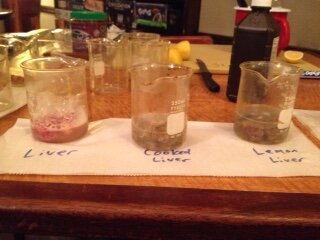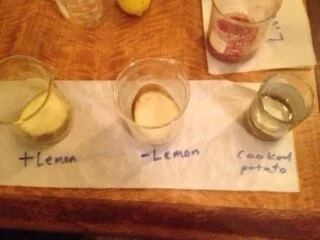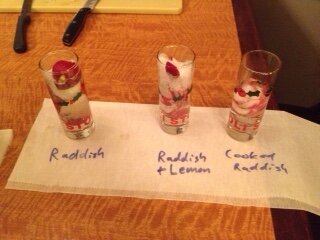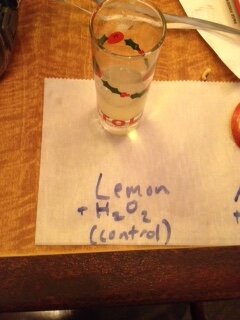The story of two enzymes
This week we studied Enzymes, their task in the cell, their structure, and the conditions that can affect their activity; temperature, pH, concentration.
We performed a series of experiments to study those effects on two enzymes. Catalase and Poly phenol oxidase. We used chicken liver tissue, and radish tissue to visualize the catalase activity.
Normal living tissue was compared to tissue exposed to high temperature and to low acidic conditions. The living normal tissue gave the highest release of the gas oxygen. according to the reaction :
2H2 O2 --Catalase-> 2H2O + O2
The second enzyme's activity was visualized by Poly phenol oxidase. We compared normal tissue of apple and potato to the same tissue treated with low acidic conditions and high temperature.
The living tissue showed browning whereas the tissue treated with low acidic conditions remained unchanged. The enzyme polyphenol oxidase wasn't active enough to generate browning of the tissue by the oyxgen present in the air around us. We also had a control in our experiment. The control was to combine the low acidic compound- lemon juice with hydrogen peroxide to make sure that these two reagents are not releasing oxygen in the amounts we observed in the experiments. The free oxygen that was released from the liver tissue was much higher than the amount released from the radish catalase activity. Liver tissue contains much more of this enzyme since the metabolic activity in the liver is much higher and it produces higher amounts of H2O2. This compound is toxic to the cells and liver tissue is eliminating this compound by producing high amounts of Catalase. Where as in radish the metabolic activity is lower and it doesn't need so much catalase.
We will continue our study of enzymes this coming Friday.




